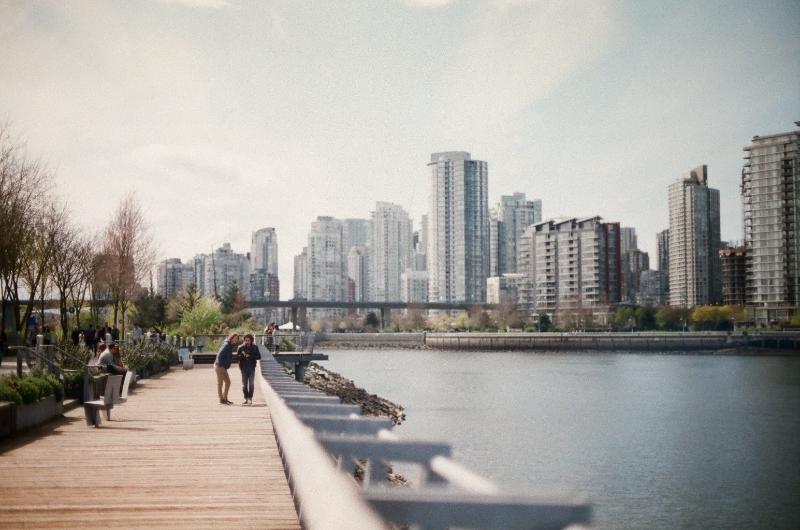Our city is a work in progress. Even before the new Crosstown LRT project peppered Eglinton Avenue with work sites, Toronto often felt like a lively, lived-in construction zone. But as chaotic as it can sometimes be, there is at least a little method to the madness. There is a Plan, and behind it, a whole department of city planners.
Jennifer Keesmaat came to the job of Chief Planner in 2012, after nearly a decade of private-sector urban planning that saw her help design – or in some cases, redesign –city spaces across the country.
Somewhere in between meetings, she found the time to answer a few questions about how Toronto is changing, and why.
Just to clarify things, what does the Planning Department actually have control over?
We have control over every part of the landscape of this city. It’s embedded in the Official Plan, and we write and maintain and recommend the Official Plan to City council. So for example, in the Official Plan, we have policies about affordable housing. We have policies about parks and open spaces. We have policies about the character and design of transit, as well as the design of streets and roads. And then we also have policies related to the built form and the uses of the city.
What’s your vision for Toronto?
The vision is contained in the Official Plan, and that’s a vision that I, you know, deeply believe in – passionately believe in. Essentially the vision is to create a city for all, that has vibrant and dynamic places for people to live, but also places for people to work and play. So there are policies related to culture, to employment, to housing, to parks and recreation.
Can you give me some examples of things you’re doing to achieve this vision?
I just came from a meeting right now on the Lawrence-Allen neighbourhood, where we have a typical suburban social housing development – it’s a pretty large site, over a hundred acres –and we are deep into phase one, where we are adding main streets, density, market housing, new housing, and redesigning the streets for pedestrians.
So where the streets today are primarily for cars, we’re adding cycling lanes and sidewalks. We’re narrowing the streets to make them more urban. So that’s an example where the vision becomes very specific on one specific site, and I can give you hundred of those sites.
[fvplayer src=”https://www.youtube.com/watch?v=vp549gsdjnk” splash=”https://torontoism.com//images/2017/04/Screen-Shot-2017-04-12-at-11.12.55.png” caption=”Walk to School: Jennifer Keesmaat at TEDxRegina”]
You’re talking about redesigning streets meant for cars, but the city right now seems full of cars – what do you see as the correct role for cars in Toronto?
It’s important to note that we keep adding people, but we don’t keep adding cars. We’ve been adding to the region 100,000 people on an annual basis, but we haven’t been adding any more cars for over thirty years to our road network. It’s been at capacity for thirty years.
The role of cars is going to change over time, as we’re already going through a shift because of things like Uber and Lyft, and we’ll go through another shift with autonomous vehicles. And the best role for the car in the city is to play – not a primary function, but a supportive function. Meaning that when there are instances where it’s not possible to get where you’re going on transit, or when you have the last mile challenge – the last mile of a trip, needing to get from transit – those are the opportunities where a car can play an important role.
How do you get people to shift to using cars in this limited way?
The first thing you need is, you need to have options. So one of the challenges in our suburbs in many areas is there aren’t a lot of options. The only way to get from point A to point B is in a car. So this is why we’ve created a really comprehensive transit network plan because we need to fill the gaps in our transit network so that people have the choice. But it’s also the reason why we’re focusing on the intensification of our avenues. Because you need to add destinations within walking distance.
And of course, we’re building our ten-year cycling plan because we know that over 75 per cent of the trips in the city of Toronto is within five kilometres from home, and five kilometres is obviously an easily bikeable distance. So adding cycling lanes is also about providing more choices.
Survival of our cities – and our planet – requires a massive culture shift. pic.twitter.com/2TFTZDqdNq
— jennifer keesmaat (@jen_keesmaat) March 12, 2017
‘Walkability’ is a big deal in Toronto planning these days. What other factors enhance walkability, aside from sidewalks?
There’s sidewalks, but also the design of buildings. If you think about walking on a sidewalk, beside a Walmart, for example, you have a big blank wall. You know, the wind is going to hit that building and be driven down and is going to make it a very uncomfortable place for you.
So, the design of buildings is one of the factors. Bringing buildings up and creating a street edge is a really important part of walkable communities. And making sure that the destinations are in close proximity to one another; a really important part of creating a walkable city is actually how land uses are planned and designed.
You’ve worked on urban planning projects all over Canada. What makes Toronto distinctive from a planning point of view?
Well, the first thing that makes it distinctive is our astronomical growth. We’re just adding so many people on an annual basis. But the other piece that makes it distinctive is that Toronto is truly a city of neighbourhoods, and people already live in neighbourhoods and do undertake many activities associated with everyday life in their neighbourhood.
Another thing that makes Toronto really distinctive is that we are a city of extremes because we’re both regional and we’re urban, as a result of amalgamation. So if you compare downtown Toronto to the city of Vancouver – which is actually a good comparison because Vancouver is not amalgamated as part of the region – we have some pretty phenomenal stats around our success in the downtown core. 75 per cent of the population living in the downtown – which is a population of 250,000 people and it’s going to double over the next twenty years – either walks, cycles, or takes transit to work. That’s on an international scale a real success.
Integration of old + new in this 9 storey office building causes a double take. Distinctly Toronto. Beautiful. pic.twitter.com/I2gDQYZoXB
— jennifer keesmaat (@jen_keesmaat) March 19, 2017
What about the divide between urban and suburban that we’ve seen in the last few municipal elections?
I’m not sure how much of that is a construct of the media and how much is real. I think people across the city want the same thing; they want to live in safe communities. We already know – there’s great research that’s been undertaken – that people want destinations within walking distance of home. They want to live in walkable communities. People want great transit across the entire city. People want excellent public spaces across the entire city. People want affordable housing across the city.
The term ‘liveability’ gets used a lot when it comes to Toronto. What does it mean to you’?
If you don’t have employment, it’s not very liveable. If you don’t have stable housing, it’s not very liveable. You need access to green space – in a city, even more so than if you were living in other places. So access to green space, to parks, to ravines, to nature, is a critical part of liveability.
I would argue that, for reasons that are almost incomprehensible, an entire generation has bought into the idea that a long commute is acceptable. And I would argue that it’s not. It’s not liveable. The average person in Toronto – the Average – commutes 45 minutes each way. That’s an hour and a half every day. The idea that we’ve normalized this as being a normal part of everyday life as opposed to being a last resort I think demonstrates how far we’ve come from really believing in the idea of liveability.
Liveability inherently means having the opportunity to choose to live close to where you work and where you undertake the activities of everyday life, as opposed to being trapped in a car, or trapped by a long commute, because that long commute can also happen on transit.”
Same street, different designs. Multimodal st moves 30,100 people/h vs the car-only st which moves 12,300 people/h. pic.twitter.com/ypfsP083VD
— jennifer keesmaat (@jen_keesmaat) November 16, 2016
You’ve said that access to nature is a key component of liveability. Obviously, this means not paving over parks and ravines, but what other, less obvious things can you do, as a city planner, to design a more nature-friendly city?
Our Ravine Strategy is a key component of this. We need to protect the ecological functions of the ravine system and invest in making it function better – enhancing water flows, adding better infrastructure (like stairs, bridges and boardwalks) to get into the ravines and to walk through them, without disturbing their important ecological functions.
Our Green Infrastructure Unit is also working on taking back ‘unused parts of the roadway to reclaim this space for the public and for storm water management. See Raindrop Plaza Park, the new public gathering space at the north-west corner of Dundas and Coxwell for example. The permeable paving and rain gardens at this park will be directing storm water runoff from Coxwell Avenue to soil stored below plaza, which will water the newly planted trees and also eliminate basement flooding in the surrounding areas.
Can you give me a few examples of city planning for our growing senior population?
The most important thing we can do for our senior’s population is to plan walkable, complete communities with amenities that are close to home, that foster a strong sense of neighbourhood. Our infill projects on our Avenues are about providing more housing choice, and ensuring that we have all of the uses in every neighbourhood to make them complete.
What can we learn from other cities?
New York City is doing an amazing job right now at building affordable housing; they’re building 20,000 units of affordable housing on an annual basis. And they have done an amazing job of creating – back in the 70’s, actually – excellent rental housing that has been protected, and as a result, the vast majority of the population lives in rental housing.
I think as Toronto matures, we’re going to need a significant increase in the rental stock of housing in the city, as an affordable housing choice. It’s difficult to look at a lot of Asian cities, because they’re just growing at such an astronomical rate, but of course, when you look at transit, they do transit in a very aggressive way, and there’s probably some lessons we can learn from that, because we’re very slow at developing our transit infrastructure.
In terms of becoming more people oriented in our design, Copenhagen is a very good example of a city that has focused on – over the course of the past thirty years – transitioning from really being a city that primarily moved people in cars, to being a city that now primarily moves people on bikes. So there are different things that we can learn from different cities around the world.
JN00ML



